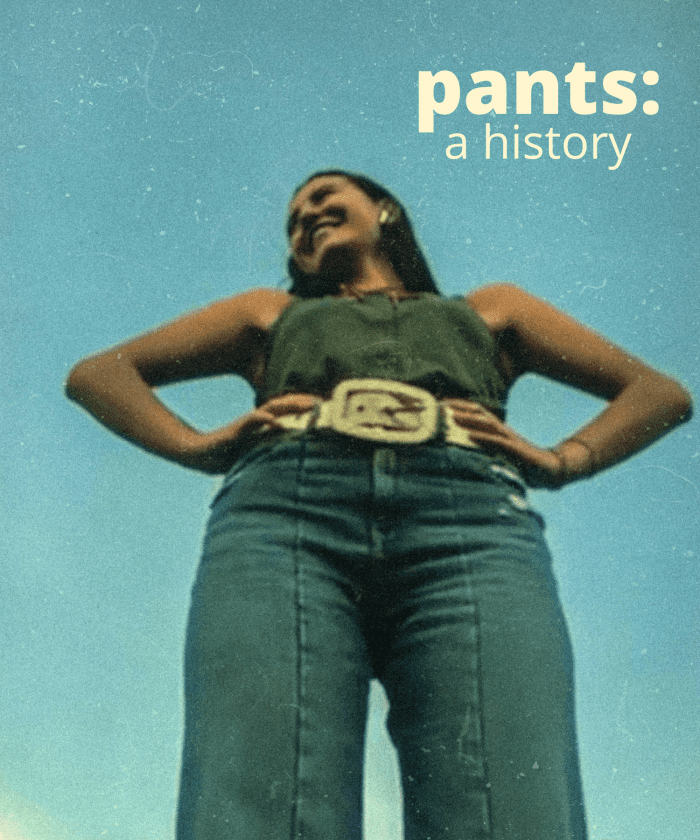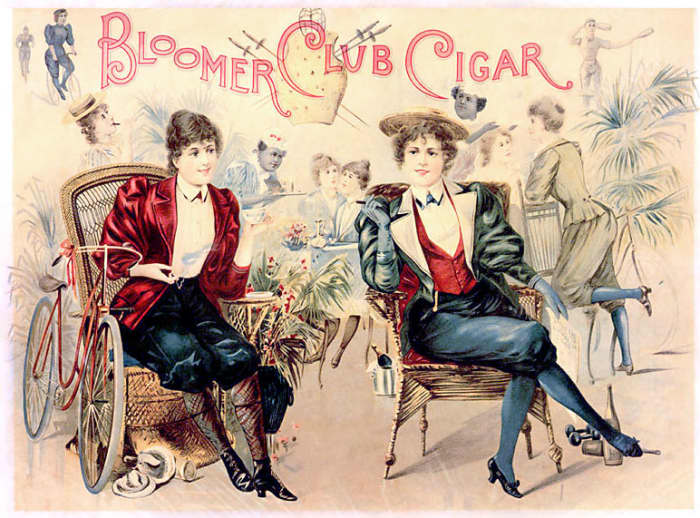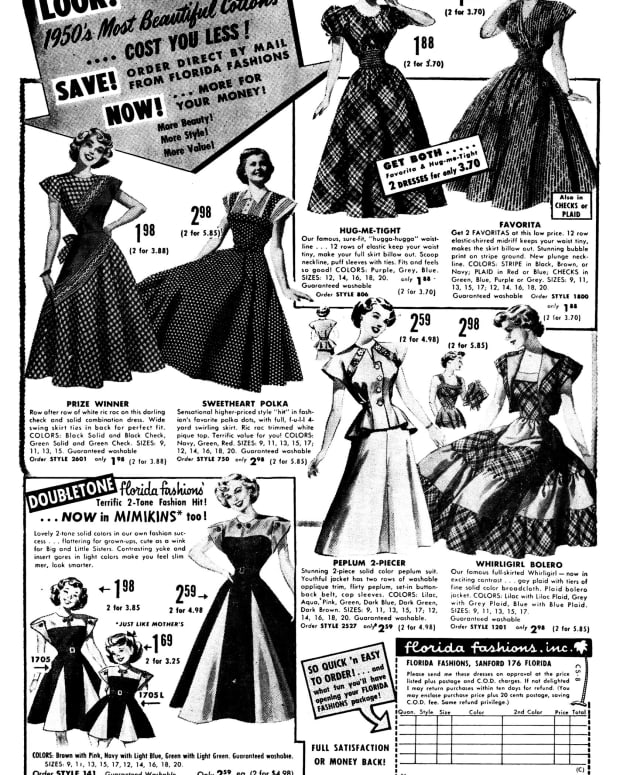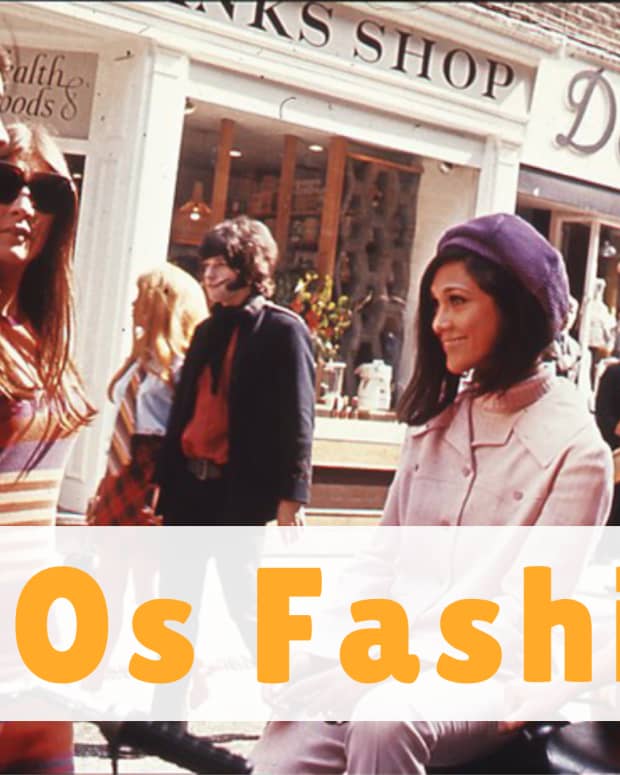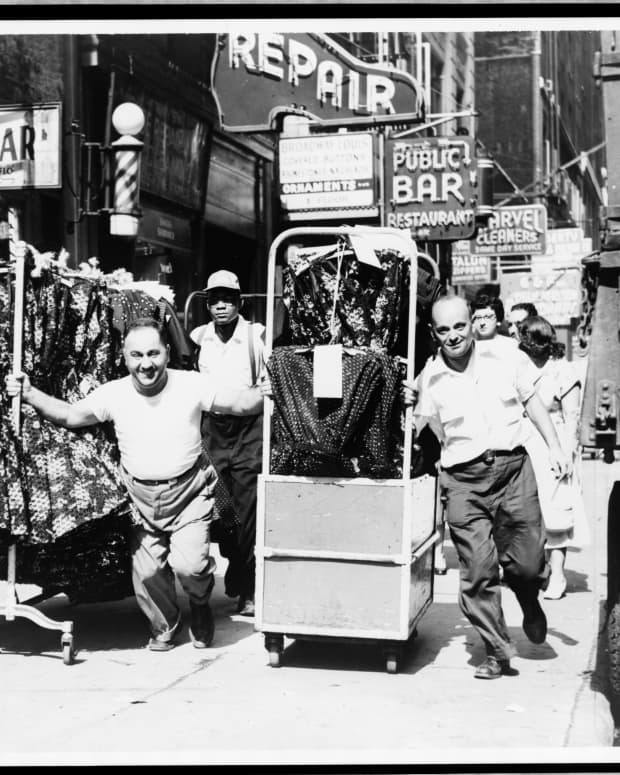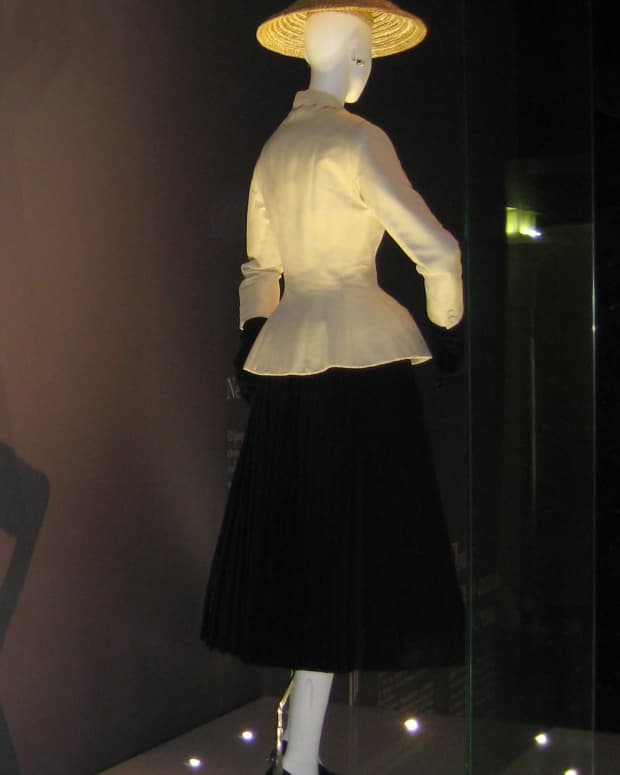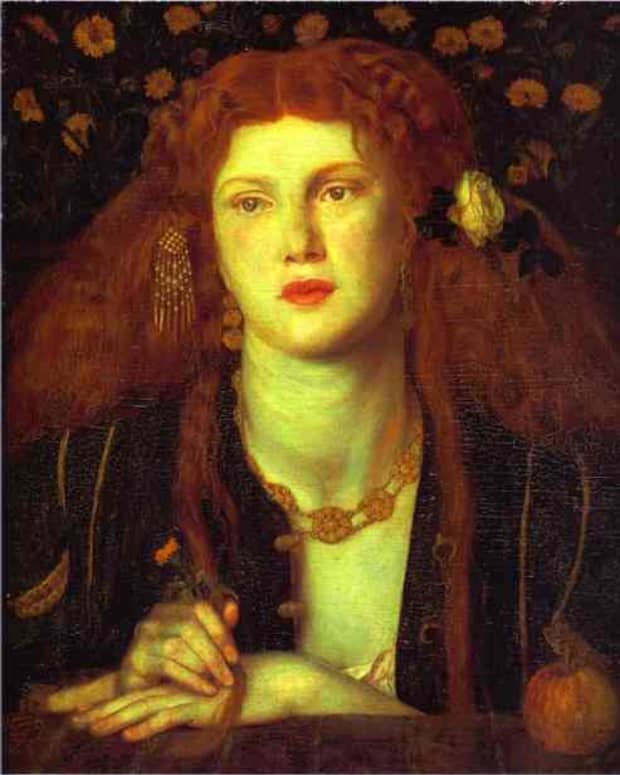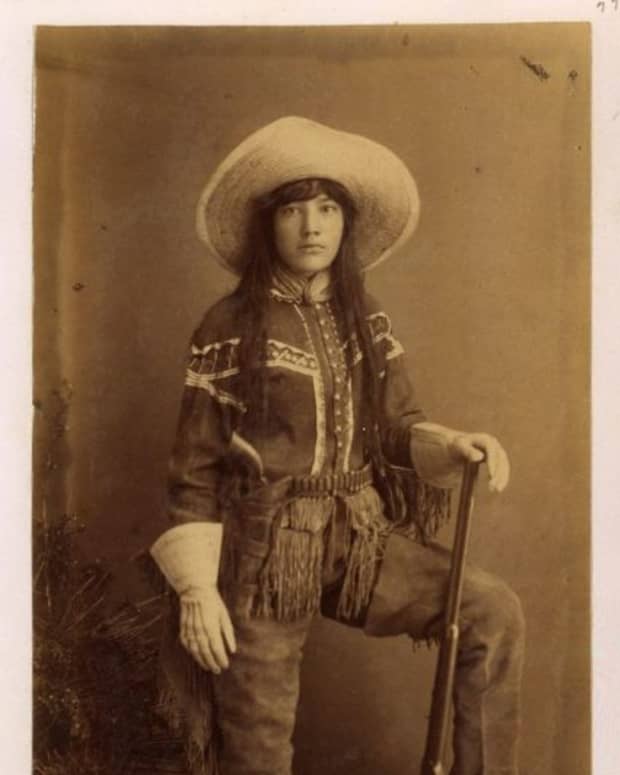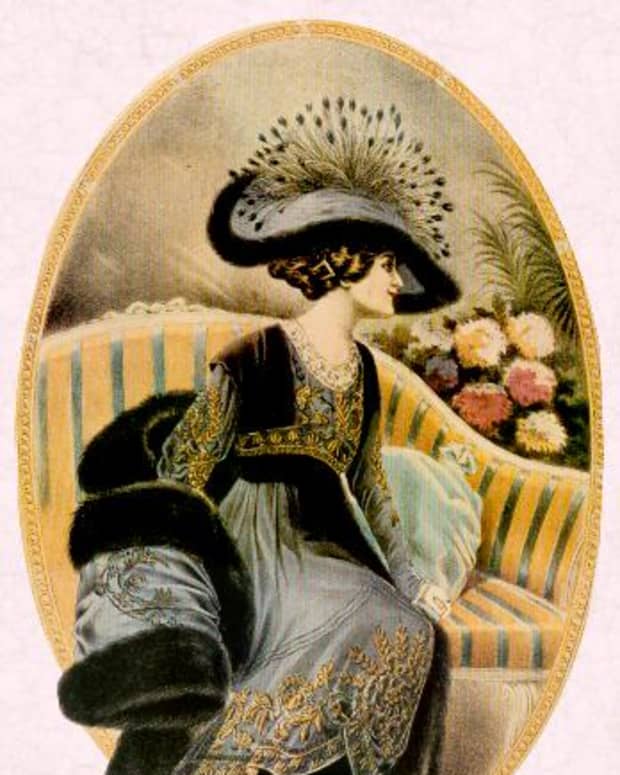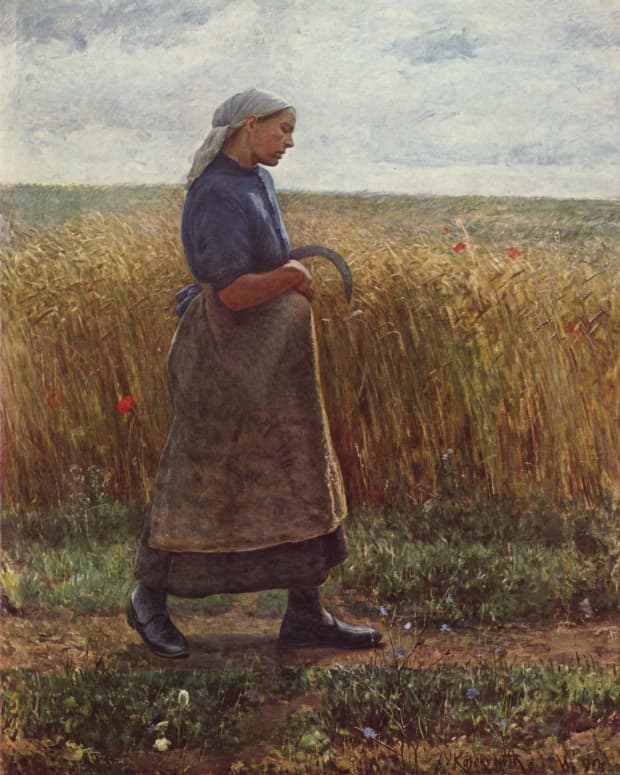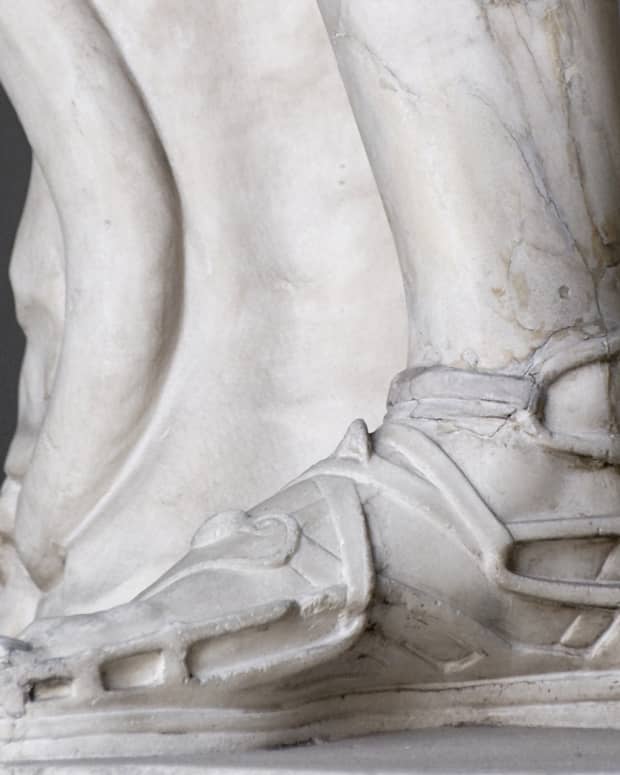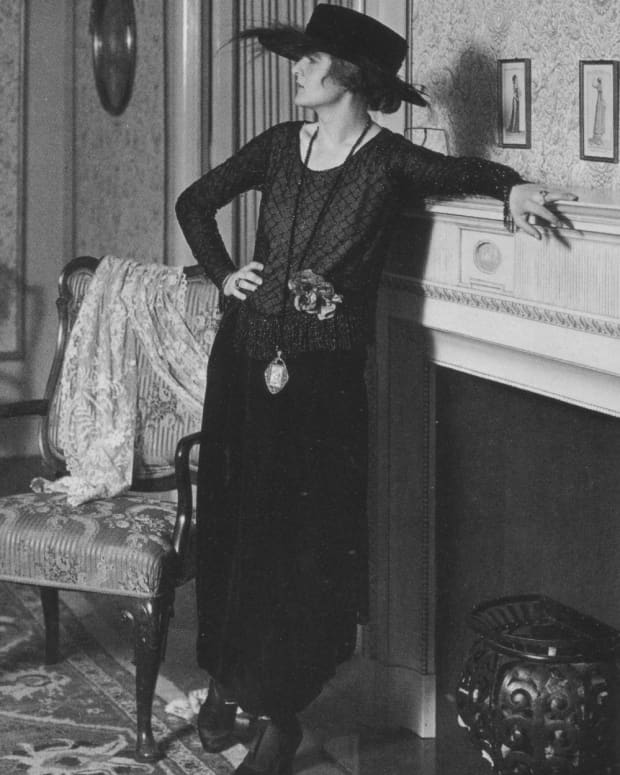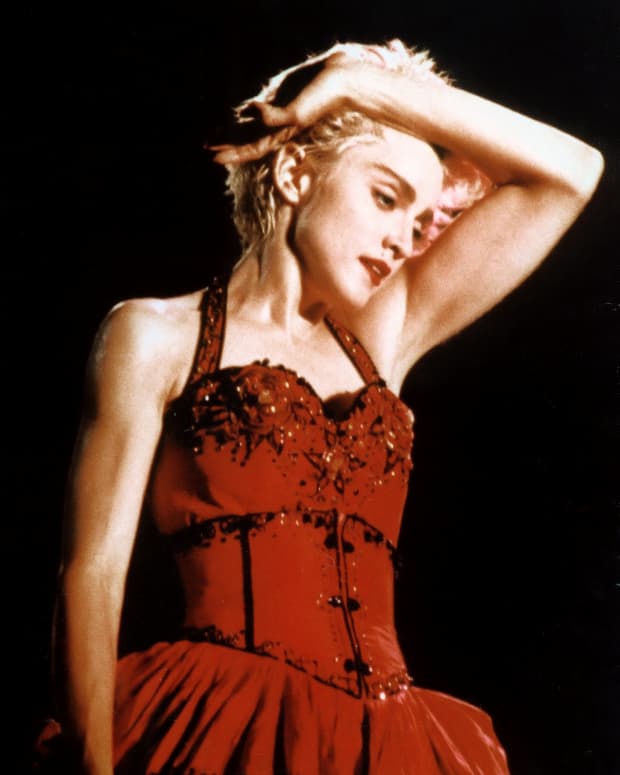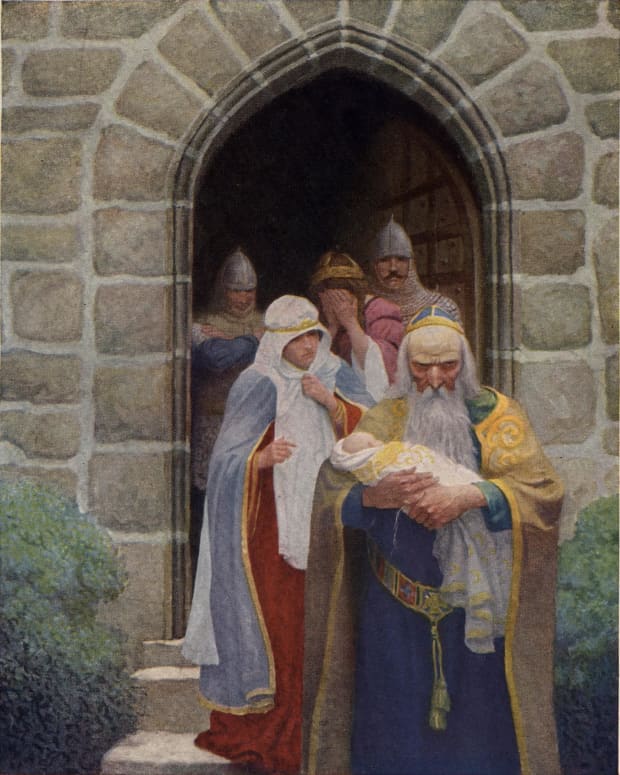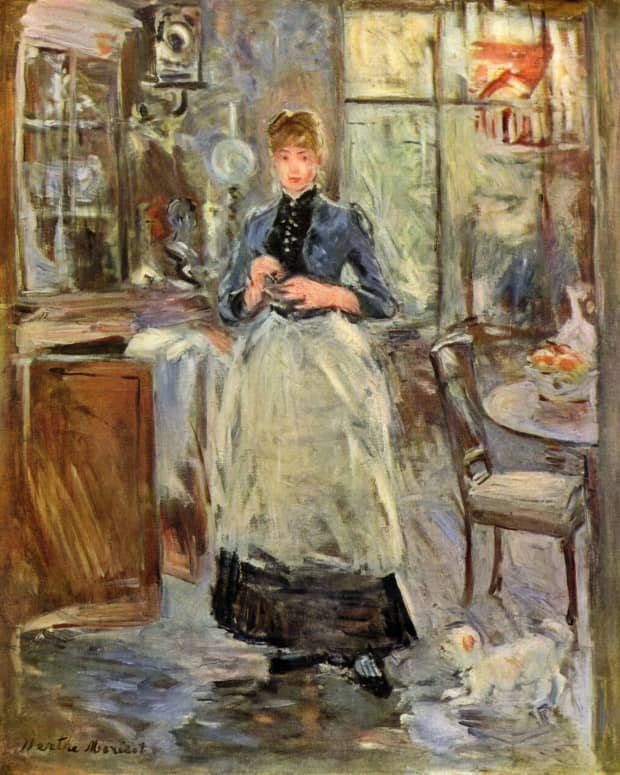A History of Trousers and Pants in Western Culture
Dolores's interest in fashion history dates from her teenage years when vintage apparel was widely available in thrift stores.
A Brief History of Pants
- Pants were worn by ancient people and were mentioned in the Bible as well as in Ancient Greek mythology.
- The King James version of the Bible mentions pants in Exodus 28:42: "and you shall make them linen trousers to cover their nakedness from the loins even to the thighs" and in the Book of Daniel, 3:21: "Then these men were bound in their coats, their trousers, and their turbans...".
- The earliest pants in the Western world were worn by equestrians of Asia minor and eastern Europe.
- Pants were worn in western Europe in 3rd century BCE.
- The zipper was invented in 1890.
- Jeans were first introduced in late 19th century.
- Pants became acceptable work attire for women in the 1970s.
Pants: A Definition
What do you call pants?
While the words pants and trousers are often used interchangeably, trousers generally refer to tailored garments with a fitted waistline, pockets, and a zipper. The word pants was often used to refer to undergarments, but is also broader term and can refer to trousers, bloomers, knickerbockers, breeches, slacks, jeans, shorts, and capris. Leggings are often referred to as pants but are more akin to hose.
Who "wears the pants"?
The expression "the one who wears the pants in the family" is meant to describe the "head" of that family and equates the wearing of pants with power and masculinity.
When did women start wearing pants?
Until the 20th century, Western culture restricted the wearing of pants to men. Before then, women wore loose pantalettes or drawers under dresses for modesty and warmth. Though actual pants were sometimes seen on women in the late 1800s and in the early part of the 20th century, it was not until the 1970s that the wearing of trousers by women was accepted for business or dress occasions.
Ancient Pants
- The wearing of pants in Western culture probably arose with the equestrian warrior cultures of Asia minor. The Scythians of the area encompassed by today's Ukraine, Bulgaria, and Romania wore loose pants tucked into boots. A portrait of a warrior wearing pants appears on a cup found in a burial site from 770 BC.
- The Greek historian Herodotus mentions the Scythians wearing pants. Herodotus also mentions Amazons (female warriors of Greek mythology) clad in trousers. An Amazon depicted on a vessel in 470 BC is obviously wearing pants.
- Pants were adapted from the Scythians by the Persians (of modern Iran) by the 5th century BC.
- The Celts, a nomadic people of Central Europe, wore pants, though documentation is sketchy at best. The style, copied from Scythians and Persians, spread through Central Europe around the third century BC.
- Ancient Greeks and Romans equated the wearing of trousers with savagery and referred to those early trouser-clad people as barbarians. When the Romans conquered Celtic Briton in the first century AD, they called the Irish "wild people." But as cultures mixed, Roman soldiers took to wearing a form of pants (called braccae) that resembled a pair of tight capris and were much more appropriate for cold weather climates than togas.
- Braccae is the Latin root of the word breeches, a type of knee-length trouser. Braccae, however, had adjustable hems and could be worn knee-length or ankle-length.
- The Thorsberg Trousers pictured below are a relic from the 4th century AC and were found in Denmark.
- Damendorf Man, a bog body found in 1900, perished between 140–380 AD. A pair of neatly folded pants were found near the corpse.



The Evolution of Pants in Europe
- Men of medieval Europe wore snug-fitting pants or leggings with a short tunic. Women wore a kind of legging or loose britches under dresses in colder weather for warmth.
- These snug pants evolved into a tighter form of leg covering and began to appear more like hose with attached foot coverings.
- By 1500, men wore voluminous knee breeches with attached hose. Fashionable men wore them in bold colors. The breeches were lined and slashed to reveal a brightly colored lining. By 1550, the breeches became a greatly exaggerated fashion, stuffed to balloon around the upper leg.
- The 1600s saw these pantaloons embellished with buttons and ribbons, while working men of the lower classes wore ankle-length pants.
- Large pantaloon styles gradually slimmed into simple breeches that were fastened below the knee. During the French Revolution, breeches came to be seen as an aristocratic conceit, and men adapted the longer, ankle-length styles of the working class. At the time, women's pants were called pantalettes, an undergarment worn beneath the skirt. They were formed of two separate linen tubes attached to a drawstring at the waist.
Victorian Pants and Trousers
- In the early part of the 19th century, men's pants were tight and occasionally fitted with stirrup straps that fit under the soles of the feet to create a smooth line, a style that would reappear for women in the late 20th century.
- Mid-1800s saw a looser-fit trouser with a button-fly front instead of the earlier "falls," a front panel that buttoned around the sides. Men's pants began to appear in the dark or neutral colors that would rule menswear until the present day.
- Victorian society strictly regulated propriety in attire. Unlike Sumptuary Laws of earlier periods when the Church and government dictated the types of garments people wore, Victorians were ruled by societal expectations. The concept of women in pants was considered inappropriate, though a few appearances of trouser-clad women shocked or amused society.
- In Victorian England, young female mineworkers wore pants under tucked-up skirts. Although convenient, a famous photograph depicting a Wigan pit girl dressed thus was considered risqué and was deemed inappropriate.
- In the middle of the 1800s, women began to clamor for freedom of movement. The Dress Reform Movement, pioneered by feminists, sought a new style of dress for women at work and for athletic activities.
- Elizabeth Smith Miller invented a type of long, puffy pants that were gathered at the ankles. Worn with a short (knee or calf length) dress and made famous by Amelia Bloomer, these "bloomers" caught the attention of the media, who ridiculed the style.
- Pictured below is Lucy Stone who met Amelia Bloomer in 1852. Stone, an American abolitionist and suffragist, appears in an 1853 photograph wearing trousers under her dress.
- But by the end of the 19th century, women began to appear in public wearing toned-down bloomers or knickers for bike riding and other sports.
- Jeans (or dungarees) were introduced in the late 19th century, created and marketed for California gold miners. Double stitching added to the durability of these pants that have changed little since the turn of the last century. Embraced by farmers and laborers, jeans ultimately became the iconic garment of the late 20th century and are, today, a staple of almost every wardrobe.
The Prince of Wales Set the Tone for Men's Pants in the 20th Century
Queen Victoria's eldest son Edward, Prince of Wales, who would become Edward VII, gave his name to the Edwardian fashion period and is credited for setting the tone for men's trousers in the modern era. Edward introduced trouser cuffs to lift the trouser hem above the dirt and popularized trouser creases.
While cuffs add weight to the pant leg for a smoother line, cuffs can visually shorten the leg, so some believe pants should only be cuffed on taller men.
Edward was also known to wear a type of shorts while on safari. The shorts had an adjustable hem.
20th Century Pants
- Paul Poiret, the famous early-20th-century fashion designer, introduced a line based on the Ballet Russes' Sheherazade which featured a long tunic worn over harem pants. This loose style of pants eventually found its way into women's wardrobes as hostess or palazzo pants, sometimes worn at the beach. They became quite popular in the 1930s and were seen on fashion icons like Coco Chanel and Katharine Hepburn.
- During World War I when British women took over factory and farm work, replacing men gone into the military, pants took on a new role for women as a practical garment.
- World War II put women back into the workforce and back into pants. Famous posters of female workers encouraged women to wear practical bib overalls and dungarees, or what we now call jeans.
- The later 20th century saw an explosion of trouser styles for men and women. Though men's dress pants have changed little since the 1930s, today it is not unusual to see men wearing shorts, a type of pants once worn only by children. Jeans have evolved from practical work garments to the symbol of outsider fashion to the classic garment no one can do without.
- Various styles of trousers have come and gone in the past 112 years, with certain styles disappearing for decades then coming back full force. The stirrup stretch pants of the early 1960s returned in the 1980s. Capris have disappeared and made a come-back.
- Trousers became acceptable formal and business wear for women by the late 1970s, with pantsuits worn by women in high positions.
Zippers
- The zipper closure was invented by Whitcomb Judson, an American traveling salesman. First used as shoe fasteners, zippers did not become a garment closure until the 20th century.
- Elsa Shiaparelli introduced a zip garment closure and decoration in 1935.
- By the end of the Great Depression, exclusive men's tailors incorporated zippers into fly closures. By the 1950s, zippers had become the main closure for trousers.
- In the mid 20th century, women's pants generally featured a side zipper. Social norms of the 1940s and 1950s dictated a feminine modesty that seemed threatened by the easy removal enabled by front-zip slacks. Side zippers also created a smoother line in the form-fitting slacks of the day. Front-zippered jeans can appear and feel bulky.
Read More From Bellatory
Types of Pants
Capri Pants were introduced by Sonja de Lennart in 1948. Named after her favorite vacation spot, the fitted mid-calf-length pants became an instant classic worn by Audrey Hepburn and Grace Kelly. Laura Petrie, the female lead on the Dick Van Dyke Show played by Mary Tyler Moore, often wore capri pants in her role as an early 1960s housewife. TV wives had, until that time, usually worn skirts or dresses.
Gauchos are loose, skirt-like pants with just-below-the-knee hems that look well paired with boots.
Shorts, first worn only by children and boys under 8 years of age, gained popularity as the 20th century advanced. Bermuda shorts feature hems just above the knee and were popularized by the British in warmer climates. Bermuda shorts were paired with high socks, dress shirts, ties, and jackets. In the United Kingdom, children still wear shorts as part of their school uniform paired with a school blazer and high socks.
Daisy Dukes are very short shorts.
Cut-Offs are jeans that have been cut into shorts, usually without a finished hem.
Pedal Pushers appeared on the August 28, 1944 cover of Life Magazine. Shortened capris or lengthened shorts, pedal pushers (also called clam diggers) end just below the knee and are convenient for bike riding or clam digging. They are very similar to knickerbockers.
Knickerbockers are a form of bicycle pants or golf pants ending just below the knee with a fastener. They were usually worn by boys or men.
Bell Bottoms, popular in the 1960s counterculture movement, widen into a bell just below the knee and came in high or low waisted styles.
Overalls are loose fitting pants with a bib-like extension above the waist, fastened over the shoulder with straps.
Sources
What People Wore When: A Complete Illustrated History of Costumes From Ancient Times to the 19th Century; Edited by Melissa Leventon; St. Martin's Press; New York; 2008
Tim Gunn's Fashion Bible: The Fascinating History of Everything in Your Closet; Tim Gunn with Ada Calhoun; Gallery Books; New York; 2012
The Encyclopedia of Clothing and Fashion; Edited by Valerie Steele; Scribner Library of Daily Life; Charles Scribner's Sons'; New York; 2005
Questions & Answers
Question: When did front flys come into fashion for women?
Answer: Though zippers were introduced in the early 20th century, they did not catch on for women until later. By the 1930s, zippers were used more often sometimes for decoration, sometimes for function.
When women began to wear pants, side zippers provided a sleek look that was popular. Front zips were seen as too masculine.
It was when the ladies began to wear jeans that the front zip crept into women's wear. Mid-century teenaged girls would wear men's or boy's jeans with front closures. The trend became so popular that jeans for women started to feature front zippers. Though some brands had introduced front zips for women earlier, they did not catch on until the 1960s.
Question: When were pleated pants introduced?
Answer: Pleats are not to be confused with creased pants. Creased pants feature a crease that extends down the leg. Pleats are created when the fabric is folded over on itself and sewed in place.
Salwar pleaded pants have been worn in India for over 2,000 years. Another pleated style called Gurkha trousers were worn by the military in Nepal. Nineteenth century British military styles adapted the comfortable trousers. Gurkha pants are double pleated in front and feature a high waistband fastened with a buckle.
Pleated pants were popular in Western men's suits in the 1930s and became the go to style in the late 1940s and 1950s. After disappearing in the 1960s, they regained popularity in the 1990s.
Question: When were pockets on pants introduced?
Answer: Pockets were once simple bags that hung from a belt. Otzi the Iceman was a mummified man found in the Alps. Dating to 3,300 BCE, the man had a pocket made of leather. Pockets worn hung from belts persisted for thousands of years. In the 13th century, slits called fitchets were cut into garments to reach an inner pocket hung from a belt. Women also wore these pockets accessible through slits in the side seams of their garments. The hidden bags thwarted pickpockets and were used to store coins, combs, keys, and hankies.
Sewing patterns made in the 1840s feature pockets sewn into the side seams of men's trousers. Utilitarian garments produced during World War I featured pockets in women's clothing.
Question: When was elastic first used in trouser waistbands?
Answer: In 1820 Thomas Hancock introduced elastic fastenings for garments and footwear. Founder of the British rubber industry, Hancock invented the machine called a Masticator that shredded up scrap rubber leading to the conservation of rubber as well as elastic. By 1900 the use of elastic in clothing became more widespread.
Boxers and briefs with elastic waistbands were introduced in the 1930s. In 1934, Alexander Simpson of Great Britain sewed elastic tabs into trouser waistbands. Soon he threaded elastic within the waistband to help keep shirts tucked in.
During and after World War II synthetic materials were developed to replace rubber due to wartime shortages. In DuPont introduced spandex in 1959. In the 1970s, baseball uniforms used elastic waistbands.
Question: Where did crease on pant legs originate?
Answer: There are some who think that King Edward VIII wore creased trousers while he was still the Prince of Wales. By the end of the 1800s, creases were showing up in men's pants. Some gentlemen wore their creases on the side! Look at old photographs of men and search for evidence of creases. Front creases became popular by the early 1900s.
© 2012 Dolores Monet
Comments
Dolores Monet (author) from East Coast, United States on September 01, 2019:
Hi Barbara - the term fly was used in the past and still is today to refer to the folded cloth at the opening of a tent. It is used to describe closings on garments that feature a strip of folded cloth. Some say that it comes from an older English word. Others claim that the wind could cause the folded tent opening to fly open.
Barbara Sestili on August 25, 2019:
How did the term "fly" come about?
Dolores Monet (author) from East Coast, United States on April 16, 2019:
Hi Don - Dr. Mary Edwards Walker was a civilian contractor surgeon for the Union during the American Civil War. An advocate for women's rights, including the right to vote, she heroically crossed enemy lines to care for the wounded. During the war and later in private practice, she often wore pants with a skirt and often dressed in a suit with trousers for which she was once arrested in New Orleans. She felt that women should dress for health and comfort, that their clothing should allow ease of movement. She was a remarkable woman.
Don Knowlton on April 12, 2019:
Don't forget the contribution of Dr. Mary Edwards Walker, early advocate of trousers and Medal of Honor recipient.
Dolores Monet (author) from East Coast, United States on February 20, 2019:
Hi Dena -
Very tiny pants. Just joking. Moleskin pants are made of cotton and have been produced since the Middle Ages. The fabric is similar to suede or unlined corduroy. It's somewhat water repellent and protects the legs from being scratched in woodland settings, Though tough and durable, moleskin fabric is soft and comfortable.
Dena Moore on February 19, 2019:
Were trousers ever made from the skins of moles?
Dolores Monet (author) from East Coast, United States on January 11, 2013:
Hi dahoglund - Ever since I got started on the fashion hubs, I've watched movies and thought about the costuming. So often books set in one time are made into movies that feature costumes of a different period. When we look back, we must remember that clothing of the past had little to do with common sense but often with social norms. In the Middle Ages, the Church dictated what women had to wear. I used to wonder how, in Victorian times, the maids carried trays of food up the stairs from the basement kitchens, wearing those long skirts. Then I read how there was a way to sort of kick forward so the women would not trip.
Thanks for the comment!
Don A. Hoglund from Wisconsin Rapids on January 11, 2013:
This was a very informative history. I often wonder about the clothing portrayed in movies depicting the past. Women are shown wearing dresses and such while doing farm work. On the other hand they are often shown wearing clothing that had not been invented yet.

